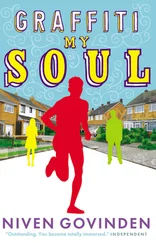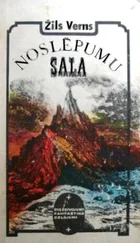Magyar was still talking. “Here’s your methane. Other volatiles like toluene and xylene. Biological oxygen demand, but don’t worry about that, BOD’s not our problem. Though if it goes much above the indicated range”—she pointed to a metal plate inset above the station, inscribed with chemicals and their safe ranges—“pass it along to me. My call code’s written up there, too. Beginning and end of each shift I’ll want a thumbprinted report. The slates are here.”
She pulled one down from a shelf and handed it to me. “Everything clear enough?”
She seemed a bit muddled, conflating more than one process, but I just nodded. “I think so.”
“Good. These readouts over here are remotes from the dedicated vapor points, but they’re often swamped during a big influx. And these two figures, in green, are the combined remotes from the online turbidimeter. The top one is NTU. Last but not least—” We walked three paces to a readout in red. “—the water temperature.” Magyar stopped. “What does it say?”
“Twenty-seven point three degrees. Celsius.”
“That’s what it should always say. Always. Not twenty-seven point six or twenty-seven point one. Twenty-seven-point three. That’s what the bacteria need.”
For a denitrification-nitrification process, heterotrophic facultative bacteria were usually comfortable anywhere between twenty-five and thirty degrees, but I just nodded. “What about emergency procedures?”
“That should have been on the orientation disk.”
“I haven’t seen an orientation disk.”
Magyar swore. “Hepple said… Never mind. I’ll see what I can do. Meanwhile, anything comes up that looks out of place, call me. Immediately. If your GC goes pink, find one of these red studs—”
She pointed to what looked like red plastic mushrooms that bloomed every five meters from walls and floors and ceilings. “—twist it through three-sixty, push it all the way down, and get out ASAP. But make good and sure that your GC really is pink. The buttons shut down the whole system. That costs enough to mean that you’ll be out of a job instantly if you make a mistake. You got that?”
I nodded.
“Good. Then we’ll move on.”
We went back to the troughs. “One worker for every two troughs according to the original design, but we operate on three per, and some are having to handle four.” She pulled the slate off her belt, scrolled through a list, replaced it. “I’ll assign you two, numbers forty-one and forty-two, while you’re working TOC analysis.”
I opened my mouth, changed my mind, and shut it again. She lifted an eyebrow. “Something to say about that, Bird?”
“TOC and nitrogen analysis is pretty important at this stage?” I knew damn well it was. Magyar nodded. “I’m just not sure that it’s possible to keep a close eye on the readouts as well as maintaining two troughs.”
“Then you’ll just have to try extra hard. Any other questions?”
Does anyone here know what they’re doing? “What about masks?”
“Do you see anyone else wearing a mask?”
“No…”
“Masks are available on request. But they’ll slow you down, and if you can’t keep up you’ll be fired.” Magyar’s voice seemed almost kindly, but her eyes were flat and hard. “You’ll soon get used to the smell. Besides, management doesn’t take kindly to agitating for more so-called safety rules.”
“I understand.” Health and Safety regulations mandated the wearing of respiratory protective devices in the presence of short-chain aliphatics like 1,1,2-trichloroethane and aromatics such as 1,4-dichlorobenzene, but I wasn’t going to argue the point here and lose my job on the first day for being a suspected union organizer. If I lost this job, my Sal Bird identity would be useless. Ruth would not help me again, and I did not want to have to ask Spanner. I said nothing.
Magyar nodded and left me to it.
The first thing I did was find the schematic handbook. It was tucked behind the slates at the readout station. At the first break, I looked it over.
The plant was well designed: good automatic monitoring and lock systems. In the event of a massive spill, all pipes would shut down, the plantwide alarm sound, and the alert sent out to county emergency-response teams. An expert system then decided how far the pollution had spread and the pipes and tanks would be pumped out into massive holding tanks. I checked the capacity. Six hundred thousand gallons. Adequate. Even better, the whole system could be overridden on the side of caution and shut down by hand. There was a first-response team structure outlined. I examined it with interest. Apparently, we should all know about it, and how to access self-contained breathing apparatus and other protective gear.
It was hard looking for the gear without appearing to be poking into others’ areas of work, but eventually I found it. There were only four sets of SCBA where there should be more than two dozen, and just two moon suits. A pile of EEBA—emergency escape breathing apparatus—all tangled together. I wasn’t surprised. No one ever expected to have to use the lifeboats.
The schematics for the sensors and chemical controls looked good, but the maintenance schedule told another story: there was plenty of water, of course, for the sprinkler system, and plenty of regular foam, but someone had decided not to bother replacing the alcohol-resistant foam canisters. That smelt of Hepple: ARF had a short shelf life, and was expensive. Ketone spills were very rare. It probably seemed like a reasonable risk.
Air scrubbers; multilevel valves for sampling vapors and liquids heavier than air and water; incident control procedures… They were all there. I wondered how familiar Magyar was with all this. I hoped I would never have to find out.
Lore is seven. Her father, Oster, is brushing her hair. It is high summer. Outside, the buildings are washed gold by the sinking sun, but inside Lore’s bedroom the ancient wooden paneling sucks in what light manages to get through the tiny window set deep in the thick fifteenth-century walls. Oster has almost finished with her hair, but Lore wants him to stay longer with her instead of running off and talking to Tok about his stupid pictures, or playing with Stella’s hair, which she has just started dyeing yellow. Lore thinks about Stella’s yellow hair. Lore’s hair—and Oster’s and Katerine’s, and Tok’s and Willem’s and Greta’s—is gray, like Lore’s eyes. Gray all over.
“Why is our hair gray?”
Oster puts the hairbrush down, pulls back the bedcovers, and motions for her to climb in. “You won’t let me go until I explain everything, will you?”
“No,” she says seriously.
“A long time ago, in a fit of ostentation—” Lore frowns at ostentation but does not interrupt. “—your grandmother had the color-producing allele turned off, She was rich—”
“As rich as we are?”
“No, but rich enough to be stupid. Anyway, she was so rich she did not know what to spend her money on. Doctors had just discovered that those people with pigmentless hair—gray with age, or white-haired albinos—got a lot of cancer in the scalp. That’s because without pigment, the hair acts like a fiber-optic cable, conducting ultraviolet from sunlight straight to our follicles, bombarding them with mutagenic radiation.” She frowns and he sighs, tries again. “Like the telephone wire brings your mother’s voice and picture to you when she’s out in the field.” Katerine never calls her when she goes away to strange places to work, but Lore says nothing. It would only upset Oster.
“So when people get old and their hair turns gray, they get cancer?”
“No. They just dye their hair black or brown or dark red or whatever, or wear a hat.”
Читать дальше












